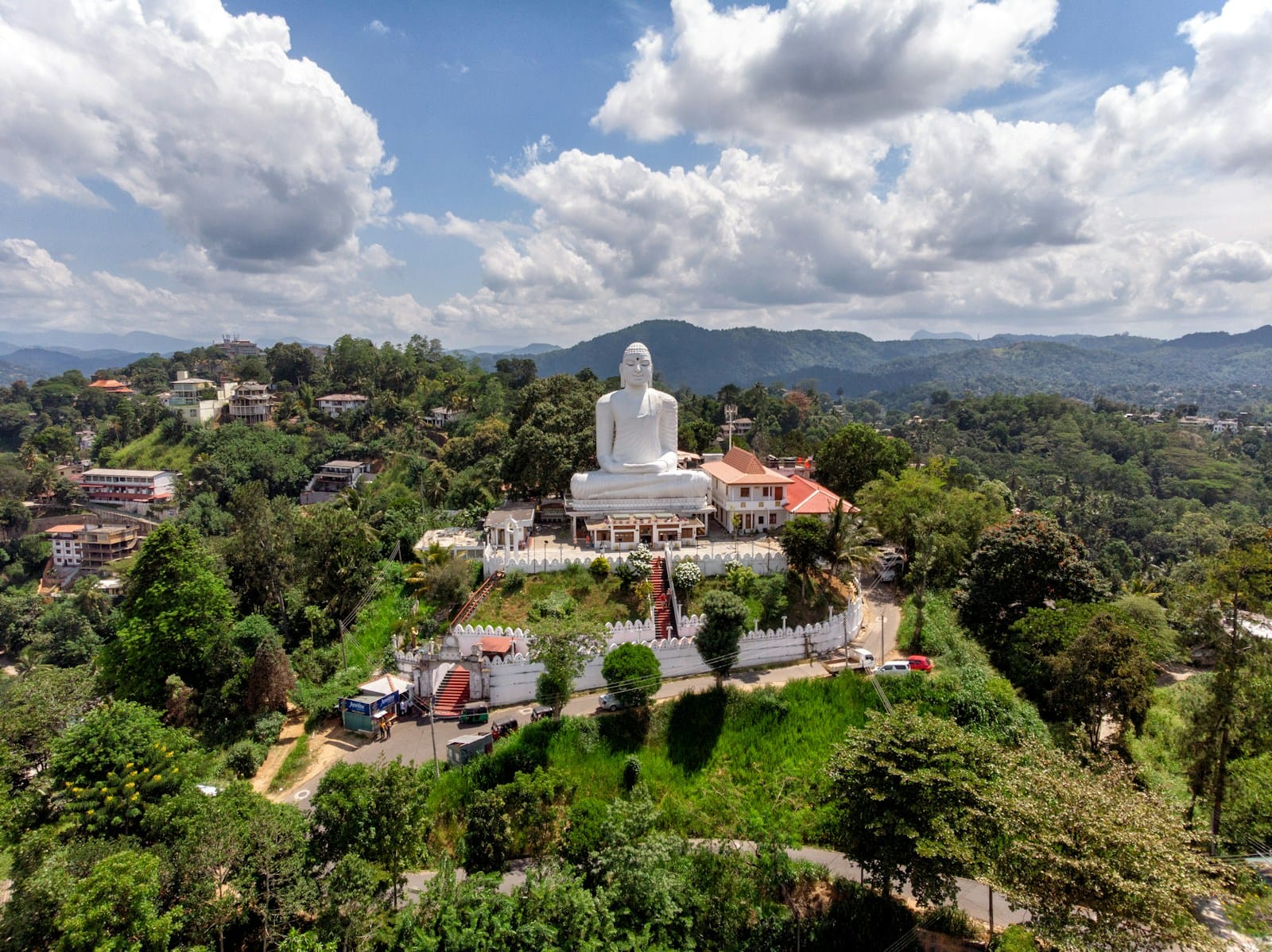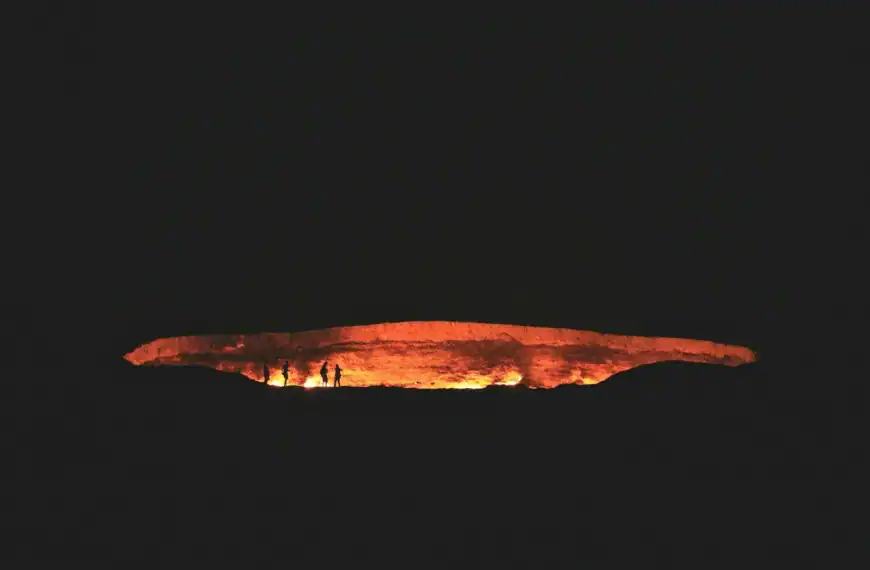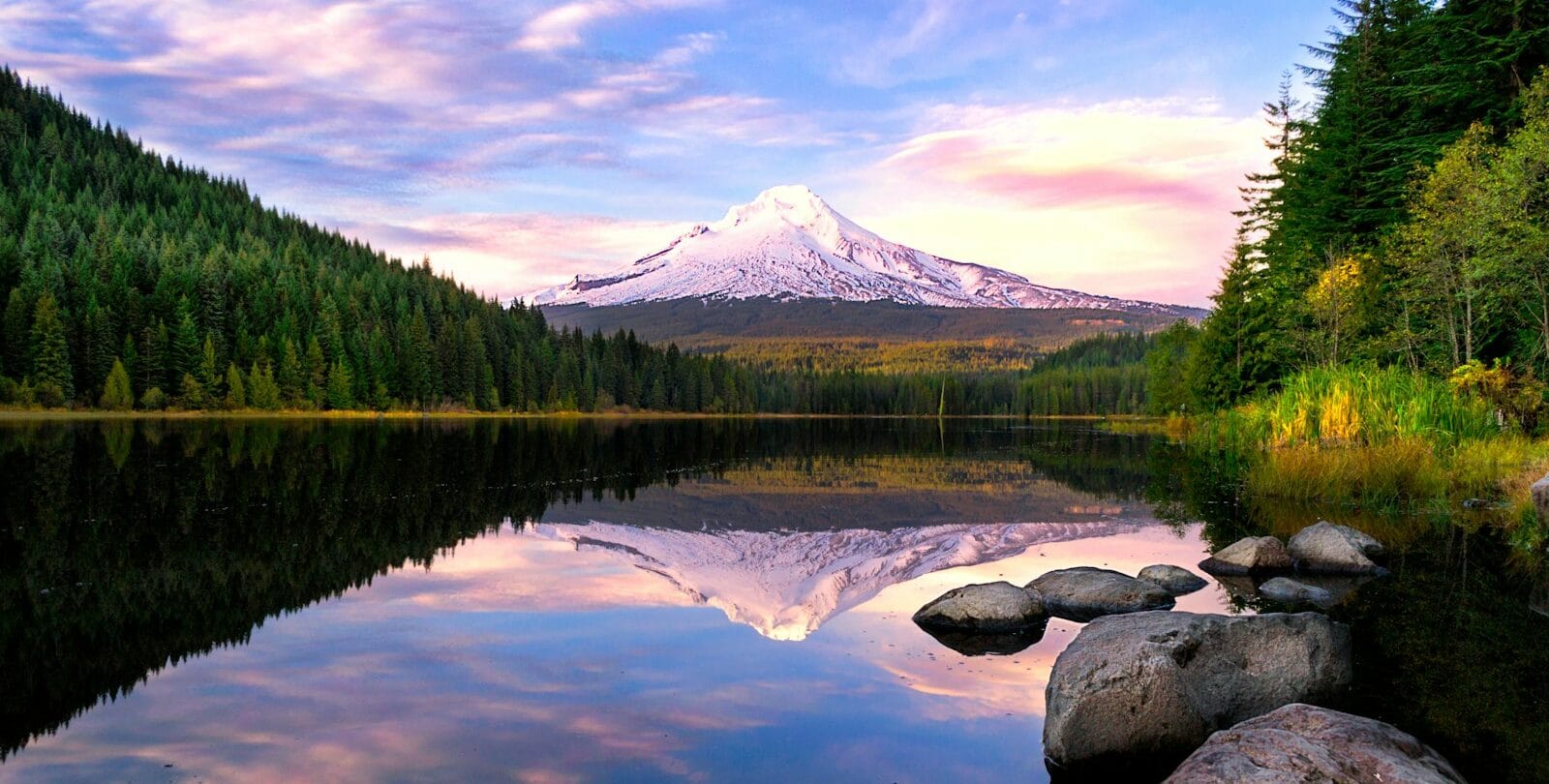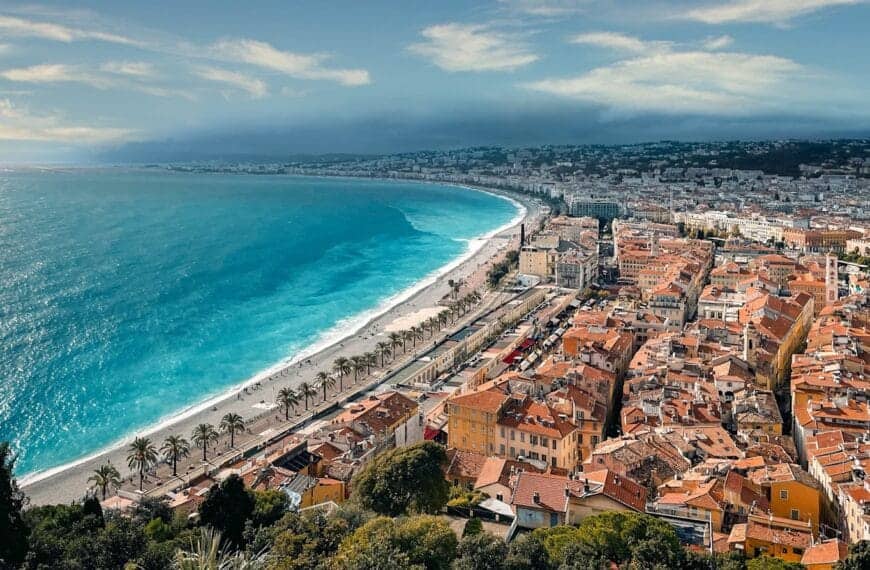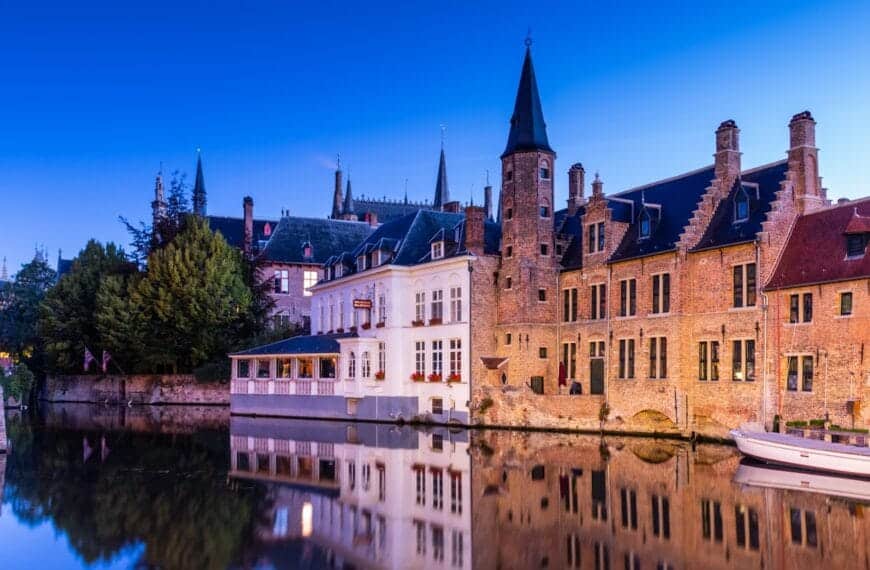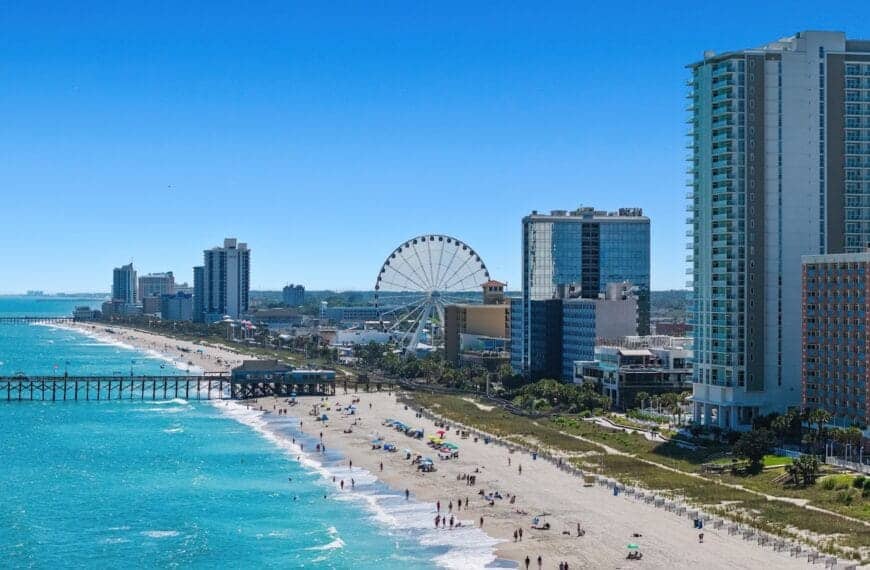Sri Lanka Travel Guide: Ruins, Wildlife & Island Soul
Intro to Sri Lanka Travel Guide
Tucked just south of India in the Indian Ocean, Sri Lanka is a compact country bursting with adventure. Golden beaches and forested peaks sit just hours apart, ancient ruins emerge from jungle floors, and elephants parade through towns during sacred festivals. From cultural triangles and coastline rail rides to cinnamon-scented markets, this island pulses with diversity — all within a day’s drive.
Start planning your trip with our complete Sri Lanka Travel Guide — explore ancient cities, surf towns, jungle safaris, and tea-covered mountains in one unforgettable island journey.
💡Quick Facts:
Continent: Asia
Country: Democratic Socialist Republic of Sri Lanka
Area: 65,610 km² (25,332 mi²)
Population: ~22.5 million (2024 estimate)
Density: ~343 people per km²
Capital: Sri Jayawardenepura Kotte (administrative); Colombo (commercial)
Regions/Subregions: Central Highlands, Cultural Triangle, Southern Coast, Eastern Province, Northern Province, Western Province
Language(s): Sinhala, Tamil (official); English widely spoken
Currency: Sri Lankan Rupee (LKR)
Time Zone(s): GMT+5:30 (Sri Lanka Standard Time)
Airports: Bandaranaike Int’l (CMB), Mattala Rajapaksa (HRI), Ratmalana (RML), Jaffna Int’l (JAF)
Climate: Tropical – wet and dry zones; two monsoon seasons
Known For: Tea plantations, wildlife safaris, ancient temples, surfing beaches, Ayurveda, cultural UNESCO sites
🛂Arrival Info:
– Most nationalities require an Electronic Travel Authorization (ETA) before arrival
– Valid for 30 days (extendable up to 180 days)
– Apply online: www.eta.gov.lk
– Passport must be valid for at least 6 months
– Visa on arrival available for some nationalities but not recommended without ETA
💉Health Info:
– Recommended: Hepatitis A & B, Typhoid, Tetanus, Rabies (for rural/animal exposure)
– Mosquito precautions needed due to dengue and chikungunya risk
– Tap water is not safe — use bottled water
– Major hospitals in Colombo and regional cities (Kandy, Galle, Jaffna); rural areas have basic facilities
✅ Check travel insurance options for travel emergencies, delays, and medical needs abroad — get coverage here
✅ Stay Informed with Official Updates: World Health Organization – International Travel and Health | Travel health updates
🚨Travel Advisory:
– Stable and safe for most tourists as of mid-2025
– Occasional political protests and fuel shortages — monitor local news
– Avoid travel near military zones or restricted areas in the north/east
✅ Stay Informed with Official Updates: US Travel Advisory | UK Foreign Travel Advice
📅Holidays:
– Independence Day – February 4
– Sinhala & Tamil New Year – April 13–14
– Vesak Poya – May (Buddha’s birth, enlightenment, and death)
– Deepavali – October/November (Hindu festival of lights)
– Christmas Day – December 25
– Note: Full Moon (Poya) Days are monthly religious holidays — alcohol banned, banks closed
💰Visitor Info:
– Currency: Sri Lankan Rupee (LKR); ~$1 USD ≈ 320–330 LKR (2025 mid-year)
– Credit/debit cards accepted in cities and hotels; cash needed in rural areas
– Tipping: 10%–15% in restaurants, ~LKR 100–300 for service staff
– ATMs common in cities and tourist towns
– Duty-free: 2 bottles of wine, 1.5L spirits, gifts up to $250 USD per adult
✈️Airports:
– Bandaranaike International Airport (CMB) – Colombo; main gateway
– Mattala Rajapaksa International (HRI) – Southern access; limited flights
– Jaffna International Airport (JAF) – Northern gateway; regional flights
✅ Delayed or canceled flight? Check if you’re eligible for compensation
🚍Transport:
– Trains: scenic and popular (especially Kandy–Ella route) but slow
– Buses: cheap but crowded; useful for budget travel
– Taxis and Tuk-tuks: widely available; negotiate or use PickMe app
– Car rentals: available with driver; self-drive not recommended for first-timers
– Roads can be congested; driving is on the left
✅ Book reliable airport transfers and in-city rides in advance. Reserve your ride here
📶Connectivity:
– Mobile SIMs from Dialog, Mobitel, Hutch available at airport and city shops
– eSIMs supported by local providers
– Excellent 4G coverage in cities; patchy in remote hill or jungle zones
– Wi-Fi offered in hotels, cafés, and co-working spots
✅ Stay connected abroad with affordable eSIM data packs. Get your eSIM here
📜Laws & Etiquette:
– Legal drinking age: 21
– Modest clothing required at temples; cover shoulders and knees
– Remove shoes before entering religious sites
– Public affection is frowned upon
– Do not pose with your back to a Buddha statue (considered disrespectful)
– LGBTQ+ travelers welcome in tourist areas but discretion advised in rural zones
🛡️Emergency Info:
– Emergency: 119 (Police), 110 (Ambulance), 118 (Disaster services)
– Tourist Police units active in Colombo, Galle, and major beach towns
– Travel insurance recommended, especially for hiking, surfing, or motorbike travel
– Embassies and consulates available in Colombo
✅ Use embassy locator tools: Embassies Worldwide
🌦️Weather:
– Dry season (South & West): December to March
– Dry season (North & East): May to September
– Monsoons: Southwest (May–Sep), Northeast (Oct–Jan)
– Best time to visit: Dec–Mar (southwest), May–Sep (east coast)
✅ Stay prepared—check the weather forecast for your destination — Weather Forecast
Sri Lanka by Region – Where to Go
Each corner of Sri Lanka offers a distinct travel vibe, from hill country tea trails to UNESCO heritage coastlines.
The Cultural Triangle (Central-North Region)
Anchored by Anuradhapura, Polonnaruwa, and Sigiriya, this region holds Sri Lanka’s ancient capitals and most iconic ruins. Climb Lion Rock at sunrise, cycle through temple-dotted plains, and see centuries-old Buddhist art inside Dambulla Cave Temple.
The Hill Country (Central Highlands)
Misty mountains, rolling tea plantations, and cool climates define this region. Kandy blends colonial elegance with sacred Buddhist relics. Nuwara Eliya, often dubbed “Little England,” is tea estate central. Ella is a backpacker favorite for waterfall hikes and Nine Arches Bridge views.
The South Coast
This region delivers everything from serene coves to surf breaks and leopard safaris. Visit Galle for Dutch forts and boutique shops, Mirissa for whale watching, and Tangalle for quiet, palm-fringed beaches. Inland, Yala National Park offers Sri Lanka’s best chance of spotting wild leopards.
The East Coast
Less developed but gaining traction, the east promises clear waters and Tamil heritage. Arugam Bay draws surfers worldwide, Trincomalee offers calm beaches and snorkeling, and Batticaloa features a lagoon culture rarely seen in the west.
The North
Still emerging from post-conflict rebuilding, this Tamil-majority region is raw and fascinating. Jaffna offers colonial forts, Hindu temples, and unfiltered northern Sri Lankan life — without the crowds.
The West Coast & Capital Region
Colombo is your entry point: a commercial capital with galleries, spice markets, and seaside promenades. Negombo, closer to the airport, offers canals, fish markets, and early Portuguese history.
Top Places to Visit in Sri Lanka
From temple ruins to tropical coasts, here’s where Sri Lanka’s spirit shines brightest.
Cultural Landmarks
Sigiriya Rock Fortress – A UNESCO masterpiece with lion-claw stairways and royal gardens
Anuradhapura – Sacred Bodhi trees, giant stupas, and the heart of ancient Buddhism
Kandy – Temple of the Tooth, cultural dances, and forest-fringed lakeside calm
Natural Escapes
Ella – Tea trails, waterfalls, and jaw-dropping ridge hikes
Horton Plains National Park – The “World’s End” trek across highland grasslands
Knuckles Range – Remote mountain hikes and rustic homestays
Coastal Towns
Galle Fort – Cobblestone streets, seaside cafés, and colonial charm
Mirissa – Whale watching, surfing, and vibrant beach bars
Trincomalee – Gentle beaches, Pigeon Island snorkeling, and Tamil temples
Wildlife Hotspots
Yala National Park – Leopards, elephants, and dramatic lagoons
Udawalawe – Best elephant-spotting destination for close encounters
Wilpattu National Park – Lesser-known, but wild and uncrowded
Spiritual & Offbeat Sites
Dambulla Cave Temples – 150+ Buddha statues in vivid fresco-filled caves
Jaffna Peninsula – Hindu temples, ferry trips to islands, and rare northern culture
Kalpitiya – Kitesurfing, dolphin watching, and quiet beach escapes
How to Choose Where to Go in Sri Lanka
The island’s compact size means you can mix mountains, ruins, and beaches in a single trip.
For Culture & History: Focus on the Cultural Triangle — Sigiriya, Polonnaruwa, Anuradhapura, and Kandy deliver ancient glory.
For Beaches & Surf: Mirissa and Weligama in the south; Arugam Bay in the east for the surf crowd; Trincomalee for laid-back, family-friendly beaches.
For Nature & Hikes: Head to Ella, Horton Plains, or the Knuckles for trekking. Include a train ride from Kandy to Ella.
For Wildlife: Prioritize Yala or Udawalawe, and consider birdwatching in Bundala.
Efficient Pairings:
- Colombo + Galle (city + colonial coast)
- Kandy + Ella (culture + tea country)
- Sigiriya + Trincomalee (ruins + calm beaches)
- Mirissa + Yala (beach + safari combo)
How to Get Around Sri Lanka
Getting around Sri Lanka is slow but scenic — the journey is part of the adventure.
Trains
The train between Kandy and Ella is one of the world’s most scenic rides. Other key lines include Colombo to Galle and Colombo to Anuradhapura.
Buses & Private Cars
Long-distance buses are cheap but bumpy. Most travelers opt for private drivers or taxis, especially when traveling as a group or with luggage.
Tuk-Tuks & Ride Apps
In cities and towns, tuk-tuks are everywhere. Negotiate or use the PickMe app for metered rides in Colombo and Kandy.
Domestic Flights
Cinnamon Air offers small domestic flights, useful for Jaffna or the east coast.
Car & Scooter Rentals
Not common for intercity travel, but you can rent scooters in beach towns like Mirissa or Arugam Bay. You’ll need an International Driving Permit.
Travel Tip
Plan fewer stops than you think — roads are winding and travel time is longer than maps suggest.
Travel Budget & Costs in Sri Lanka
Sri Lanka offers excellent value for money, especially for mid-range travelers.
Average Daily Costs
- Budget: $20–35 (guesthouses, buses, local eats)
- Mid-range: $50–100 (nice hotels, trains, safaris)
- Luxury: $150–300+ (boutique stays, private drivers, fine dining)
Sample Prices
- Rice & curry meal: $1.50–3
- Safari jeep tour (half-day): $40–60 per person
- Train (2nd class reserved): $1–3
- Private driver (full day): $40–80
- Double room (mid-range): $35–70
- Surf lesson: $20–30
Tips to Save
- Avoid western-style coffee shops — they cost double local tea houses
- Eat where locals eat (try a rice packet or kottu stall)
- Book trains and safaris early during peak season (Dec–Mar)
Best Time to Visit Sri Lanka
Sri Lanka has two monsoon patterns, so the best time depends on your destination.
South & West Coasts + Hill Country (Dec–Mar)
This is high season in the most visited regions — sunny skies, calm seas, and ideal hiking conditions. Galle, Mirissa, and Ella are especially popular now. Book ahead during Christmas and New Year.
East Coast (Apr–Sep)
Sri Lanka’s east shines during the southwestern monsoon. Head to Arugam Bay, Trincomalee, and Batticaloa for dry weather, surf, and snorkeling. Fewer crowds, lower prices.
Shoulder Season (Apr, Oct–Nov)
These months offer good compromise — scattered rain but lush landscapes and fewer tourists. Great for travel flexibility and budget deals.
Best time to visit Sri Lanka:
- For wildlife: Feb–June (leopards, elephants)
- For surfing: July–Aug (Arugam Bay), Nov–Mar (south)
- For cultural travel: Dec–Mar
- For hiking: Jan–April (clear skies in the highlands)
Must-See Experiences in Sri Lanka
From sunrise hikes to street food feasts, Sri Lanka offers an island’s worth of memory-making moments.
Sacred Sites & Cultural Experiences
- Climb Sigiriya at dawn for jungle views and ancient frescoes
- Visit Temple of the Tooth in Kandy during evening ceremonies
- Experience a Poya Day (Buddhist full moon holiday) with temple rituals
- Explore Polonnaruwa by bicycle through 12th-century palace ruins
Outdoor & Wildlife Adventures
- Ride the train from Kandy to Ella past waterfalls and cloud forests
- Safari in Yala or Udawalawe to spot elephants and leopards
- Hike Little Adam’s Peak or Ella Rock for dramatic hill country views
- Whale watch in Mirissa (Dec–Mar) or Trincomalee (May–Aug)
Markets & Food Tours
- Wander Galle’s Dutch market for tropical fruit and cinnamon
- Try kottu roti sizzling fresh from the grill
- Drink Ceylon tea with planters in Nuwara Eliya
- Join a Sri Lankan cooking class in Colombo or Kandy
Spiritual Journeys & Festivals
- Witness Esala Perahera (July/Aug) — Sri Lanka’s biggest Buddhist festival
- Visit Adam’s Peak (Dec–May) — a pilgrimage climbed before sunrise
- Explore Jaffna’s Hindu temples, a window into Tamil spirituality
Book immersive Sri Lanka tours and experience unforgettable things to do in Sri Lanka — from sacred temple rituals and hilltop treks to colonial cities and rainforest safaris.
Best Travel Itineraries in Sri Lanka
Sri Lanka’s size makes multi-region travel possible in just 1–2 weeks. Customize with these starting points.
10-Day Cultural & Scenic Circuit
Colombo → Dambulla → Sigiriya → Kandy → Ella → Galle
See UNESCO heritage sites, temple caves, tea country, and colonial coastal charm. Ideal for first-timers.
2-Week Surf, Safari & Ruins Combo
Negombo → Anuradhapura → Trincomalee → Arugam Bay → Yala → Tangalle
A mix of sacred cities, beach chill, and off-the-beaten-track safaris.
East Coast Escape – 7 Days
Batticaloa → Trincomalee → Arugam Bay
Perfect for summer travelers. Think snorkeling, surf culture, and coastal Tamil heritage.
Hill Country & Highlands – 8 Days
Kandy → Nuwara Eliya → Ella → Horton Plains
Ideal for cool-climate escapes, slow travel, and scenic train lovers.
Local Cuisine & Culinary Experiences
Sri Lankan cuisine bursts with spice, texture, and tropical freshness — often eaten with fingers and joy.
Must-Try Dishes
- Rice & curry – The national staple, with dhal, sambols, and rotating sides
- Hoppers (Appa) – Bowl-shaped rice pancakes, sometimes with egg
- Kottu Roti – Chopped roti stir-fried with veggies, egg, and meat
- Pol Sambol – Spicy coconut relish served with everything
- Lamprais – Dutch-influenced banana leaf rice parcels with curry and frikkadel
- Pittu & String Hoppers – Rice flour noodles or tubes eaten with coconut milk curry
Unique Food Experiences
- Drink ginger tea or wood apple juice in roadside stalls
- Snack on short eats from train vendors: samosas, rolls, vadai
- Join a market walk + cooking class in Colombo or Galle
- Sample Jaffna crab curry, fiery and unforgettable
Travel Safety & Cultural Etiquette in Sri Lanka
Traveling Sri Lanka is generally safe and welcoming, but sensitivity to culture and awareness of current events is key.
Safety Tips
- Avoid travel near active political protests (rare but possible in cities)
- Wildlife safaris should always be with licensed guides — do not approach elephants on foot
- Solo female travelers should dress modestly and avoid isolated areas after dark
- Keep hydrated and carry mosquito repellent, especially in lowland areas
Cultural Etiquette
- Cover shoulders and knees when visiting temples
- Remove shoes and hats at sacred sites
- Avoid public displays of affection
- Use right hand for giving or receiving items
- Learn a few Sinhala or Tamil phrases — locals deeply appreciate the effort
- Respect sacred wildlife like elephants — avoid unethical riding or chains
Tours and Excursions: Inspiration for Your Next Adventure
- Kandy – Nestled in the hills of Sri Lanka, Kandy is a cultural gem known for the Temple of the Sacred Tooth Relic and its beautiful lake. A must-visit for heritage lovers.
- Sigiriya – Home to the iconic Lion Rock Fortress, Sigiriya combines ancient architecture with breathtaking views, making it one of Sri Lanka’s most awe-inspiring archaeological sites.
- Galle – A coastal city rich in colonial history, Galle boasts charming streets, a historic Dutch fort, and a laid-back seaside atmosphere perfect for a relaxing escape.
- Ella – Surrounded by lush tea plantations and misty mountains, Ella offers scenic hikes, waterfalls, and the famous Nine Arches Bridge — a haven for nature lovers.
- Yala National Park Safari – Embark on an unforgettable safari in Yala, where you can spot leopards, elephants, and exotic birds in their natural habitat.
- Colombo – The vibrant capital city blends modernity with tradition, offering diverse cuisine, bustling markets, and a lively waterfront to explore.
Where to Go Next – Pair Sri Lanka with These Destinations
Extend your South Asian adventure with these well-connected regional neighbors:
- Maldives – A short flight away — perfect for a luxury beach finale after inland adventures.
- Nepal – Trade island culture for Himalayan trekking and Buddhist monasteries.
- India – Just across the strait, Tamil Nadu pairs beautifully for a spiritual and culinary continuation.
- Thailand – Direct flights to Bangkok offer a switch to Southeast Asia’s temple-and-market energy.
- Malaysia – For a mix of colonial cities, food diversity, and island exploration.
Final Planning Checklist for Sri Lanka
Get ready for a smooth, immersive journey with these prep essentials:
- Finalize a route that balances culture, coast, and mountains
- Book train tickets, safaris, and key accommodations in advance
- Apply for the Sri Lanka ETA (online visa) ahead of arrival
- Pack light cotton clothing, sunscreen, and temple-ready outfits
- Download offline maps (Maps.me), PickMe, and currency converters
- Purchase a local SIM at the airport (Dialog, Mobitel)
- Carry cash for remote areas (ATMs in cities only)
- Respect cultural sites with quiet behavior and proper dress
- Bring reusable water bottles — filtered stations are common in hotels
Explore Sri Lanka with confidence using our trusted tips, local insights, and region-by-region planning tools.
For more expert travel tips, practical strategies, and trusted tools — visit our Homepage and get inspired for your next trip.

